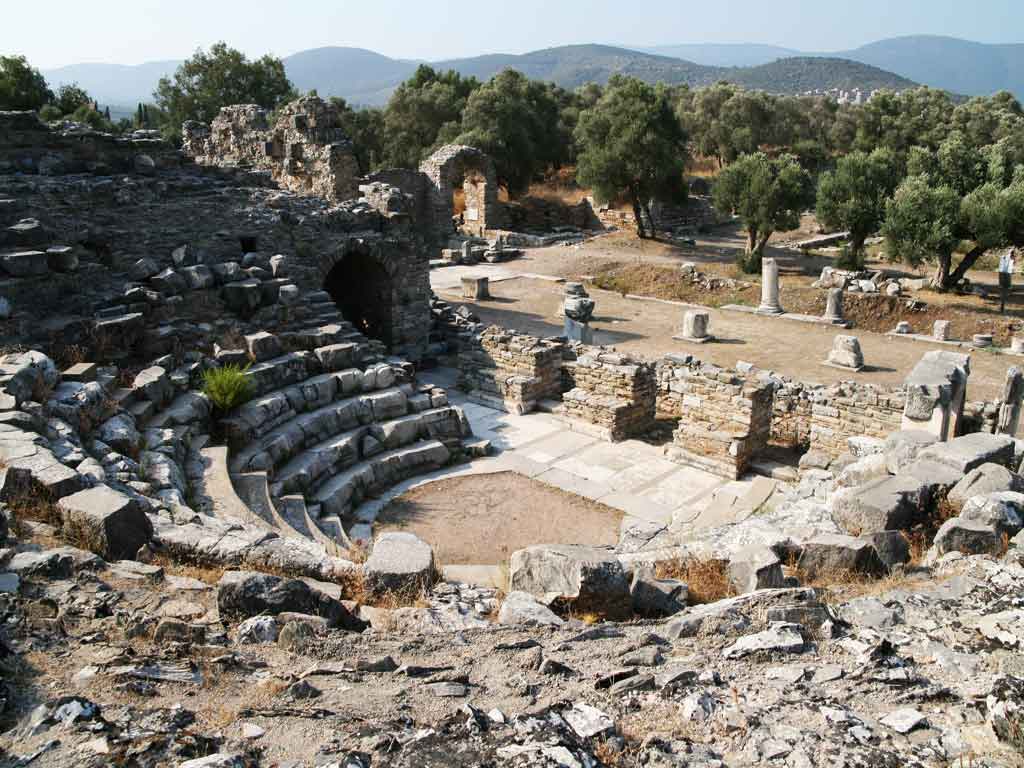The Bouleuterion

The bouleuterion rises near the south-west corner of the agora just behind the south stoa. It is one of the best surviving buildings in Iasos: even before the excavations, the upper part of the flight of steps was visible on the ground, so much so that Texier, in his first plan of the city, indicated it as the curve of a stadium.
The original building was probably erected in the 4th century BC, when the city council (boule) was constituted, but the present arrangement of the structure dates to the 1st century AD. Its ground plan is rectangular and its row of seats (cavea) has the shape of a three-quarter circle. The function of the building also changed in this period: it was given a circular central space, seats and a proscenium, and was used as a small covered theatre. The original frons scaenae was pierced by three doors and was decorated with two orders of columns with niches. The cavea was divided into three sectors by stairs and the lower steps are divided from the upper by a corridor (diazoma). The seats were furnished with lion’s paws at the edges of the steps. The space reserved for the chorus (orchestra) was paved with tiles in local white and red marble. A system of passages, corridors (ambulacra) and stairs, connected with the outside, led to the side entrances (parodoi), thereby granting access to every part of the building. In the age of Hadrian, while other works were being carried out in the agora, the façade of the bouleuterion was embellished with rich sculptural decoration and stairs giving access to the galleries (tribunalia) were added.
In the material filling the corridor running around the building, there were fragments of a large relief which portrayed a bearded male figure, seated on a kline, with his left arm resting on a cushion. Other fragments consist of a right bare foot raised against a piece of drapery; of part of a limb, perhaps an arm, sculpted in high relief; and parts of the legs of a bed. The reconstruction and interpretation of the scene displayed in the relief is uncertain. Recent studies, however, identify the figure as being a rare portrayal of Iasos, the heroic founder of the city named after him. The piece is the product of skilled workmanship and is datable to the period of the Hecatomnids (first half of the 4th century BC).
The original building was probably erected in the 4th century BC.
The present arrangement of the structure dates to the 1st century AD.

 Selçuk University
Selçuk University  Ministry of Culture & Tourism
Ministry of Culture & Tourism